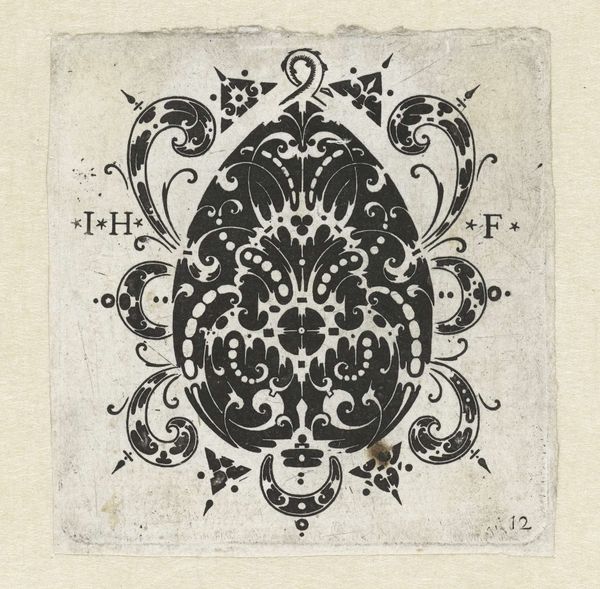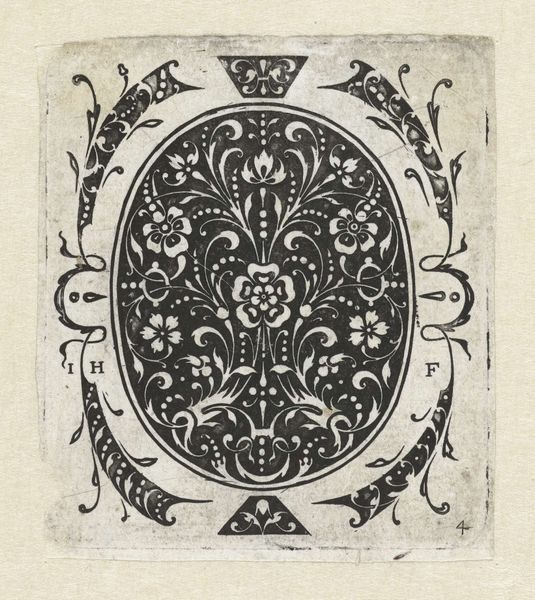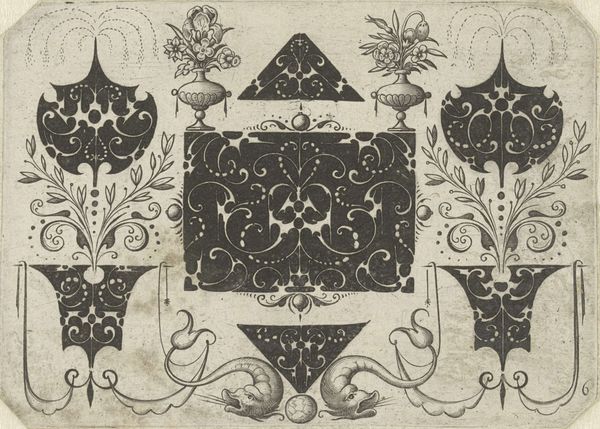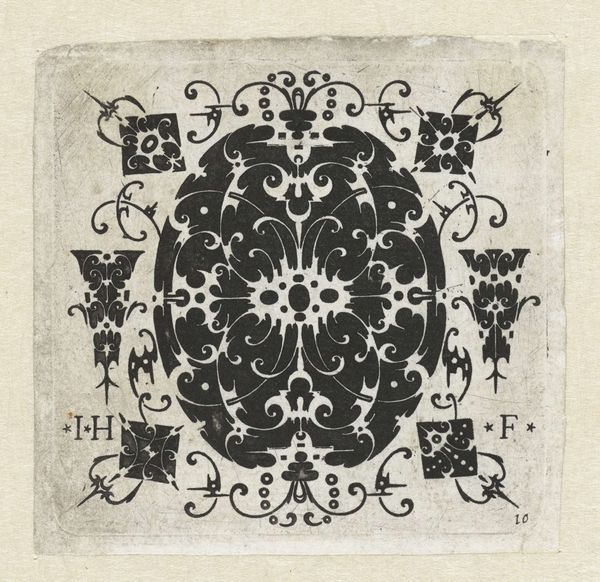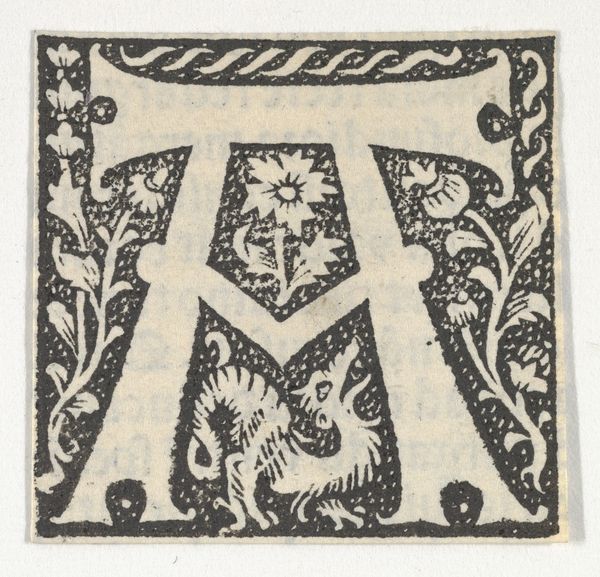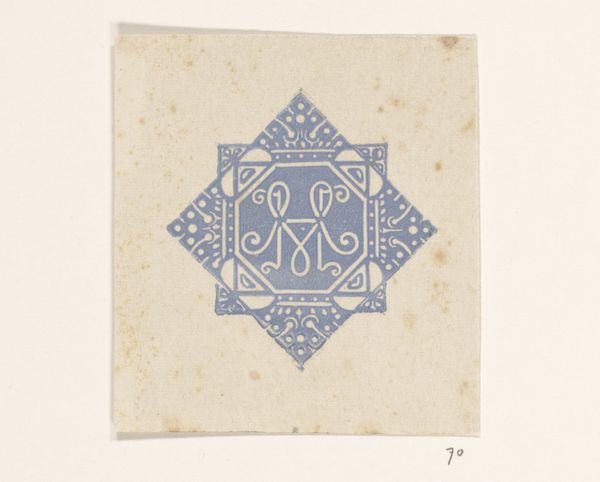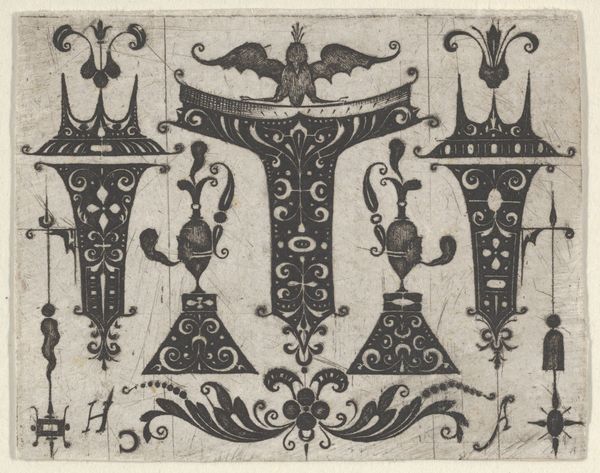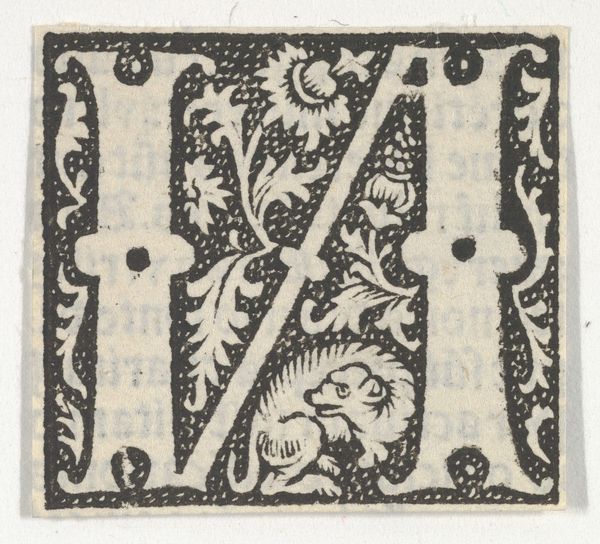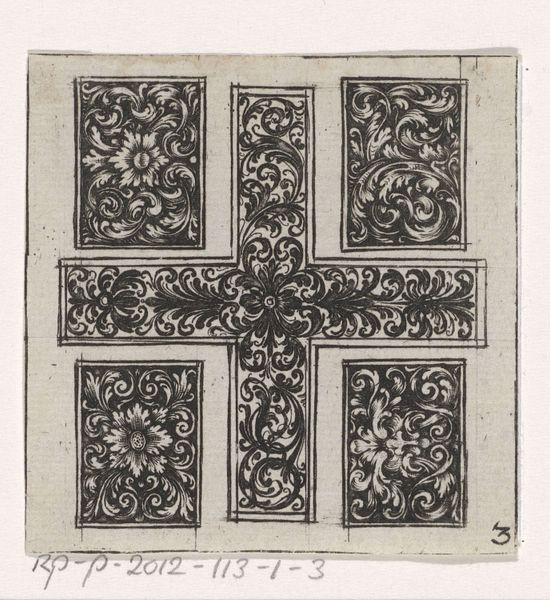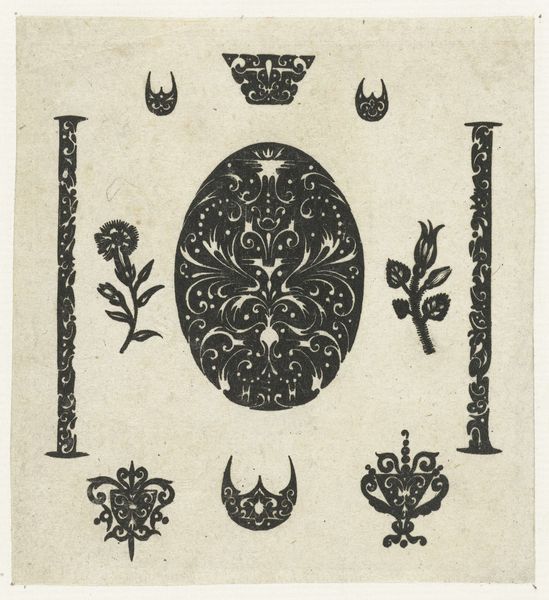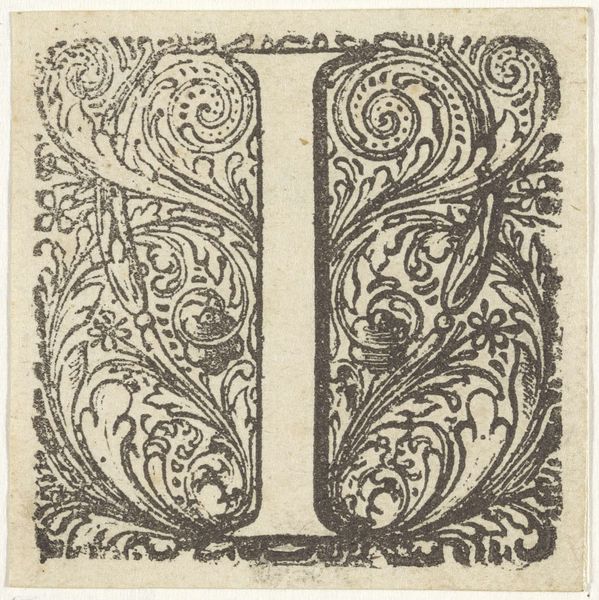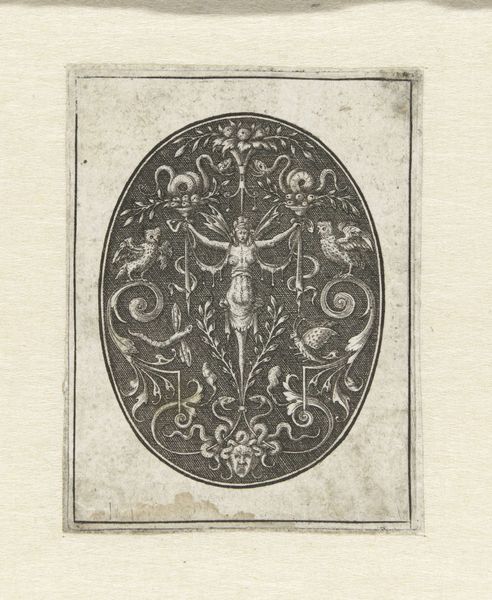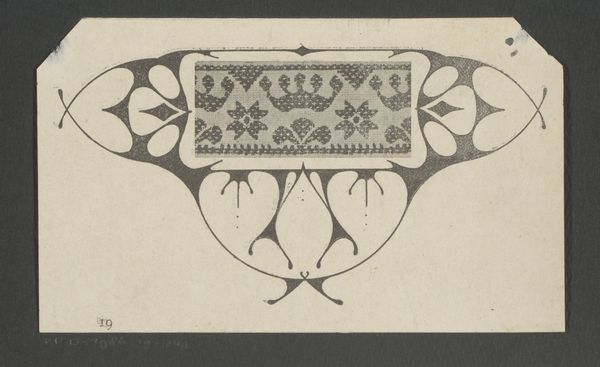
print, engraving
#
baroque
# print
#
old engraving style
#
geometric
#
engraving
Dimensions: height 67 mm, width 70 mm
Copyright: Rijks Museum: Open Domain
Curator: At first glance, this geometric engraving from 1619 offers a compelling insight into Baroque ornament. Known as "Vierkant vlak, zes kleinere motieven en vier ornamenten"—roughly translated as "Square plane, six smaller motifs and four ornaments"—it’s held here at the Rijksmuseum. What impressions does it spark for you? Editor: I am immediately struck by the interplay of darkness and light, creating a very rigid and austere composition. The stark black lines against the aged paper feel simultaneously ancient and intensely deliberate. The material itself seems central to understanding its power. Curator: Precisely. The act of engraving, meticulously cutting into a metal plate, is so crucial to the artwork's character, right? The medium—print on paper—allowed designs to be replicated widely and incorporated into other art forms or crafts. It's like a concentrated essence of a larger, perhaps imagined object. What do you suppose Hurtu, the artist, intended here? Editor: I suspect these weren’t seen as "art" in the modern sense, but practical templates or designs. Think of the engraver's labor – each line a physical act of production, disseminated to artisans perhaps to be replicated on furniture or tapestries... even cake molds? It reframes our idea of Baroque exuberance. Curator: I love that notion—designs trickling into daily life. In a way, it transforms the meaning. Once taken off the printed sheet and placed on a physical object. Editor: It moves out of the hands of a few elite collectors into something that might become integrated into different modes of commerce. What stories would this image tell, transposed onto different surfaces? And to reflect this idea of distribution... how many different copies would have existed for it to last until today, housed in a museum? Curator: It suggests layers upon layers, which leads us to seeing not merely an image, but its afterlife. Even more profound that these geometric lines became some sort of object decorating real spaces somewhere back then. Editor: Agreed! From material process to material culture.
Comments
No comments
Be the first to comment and join the conversation on the ultimate creative platform.
